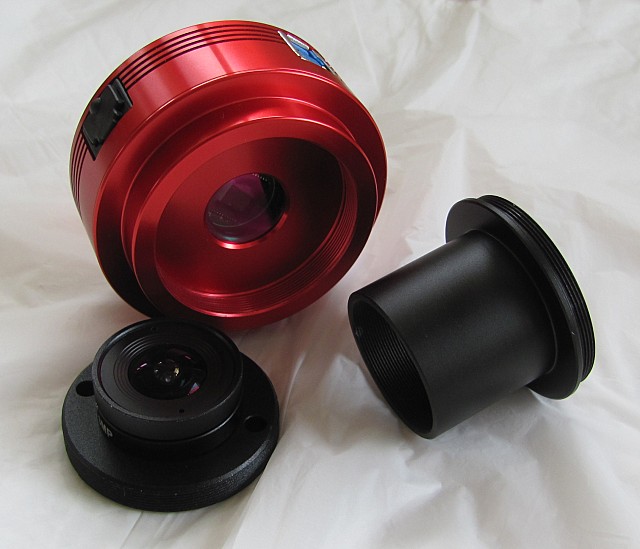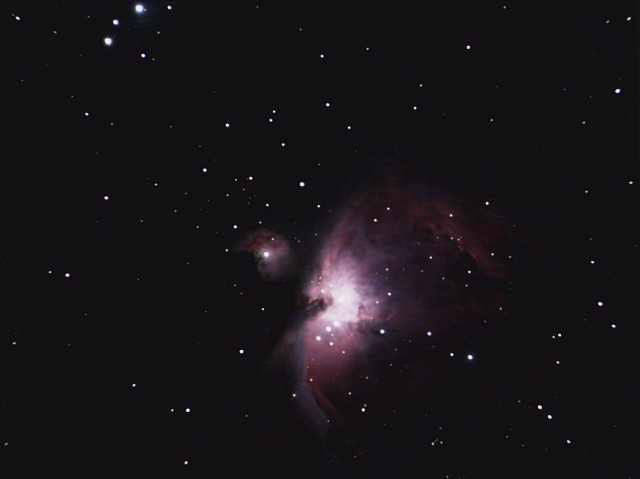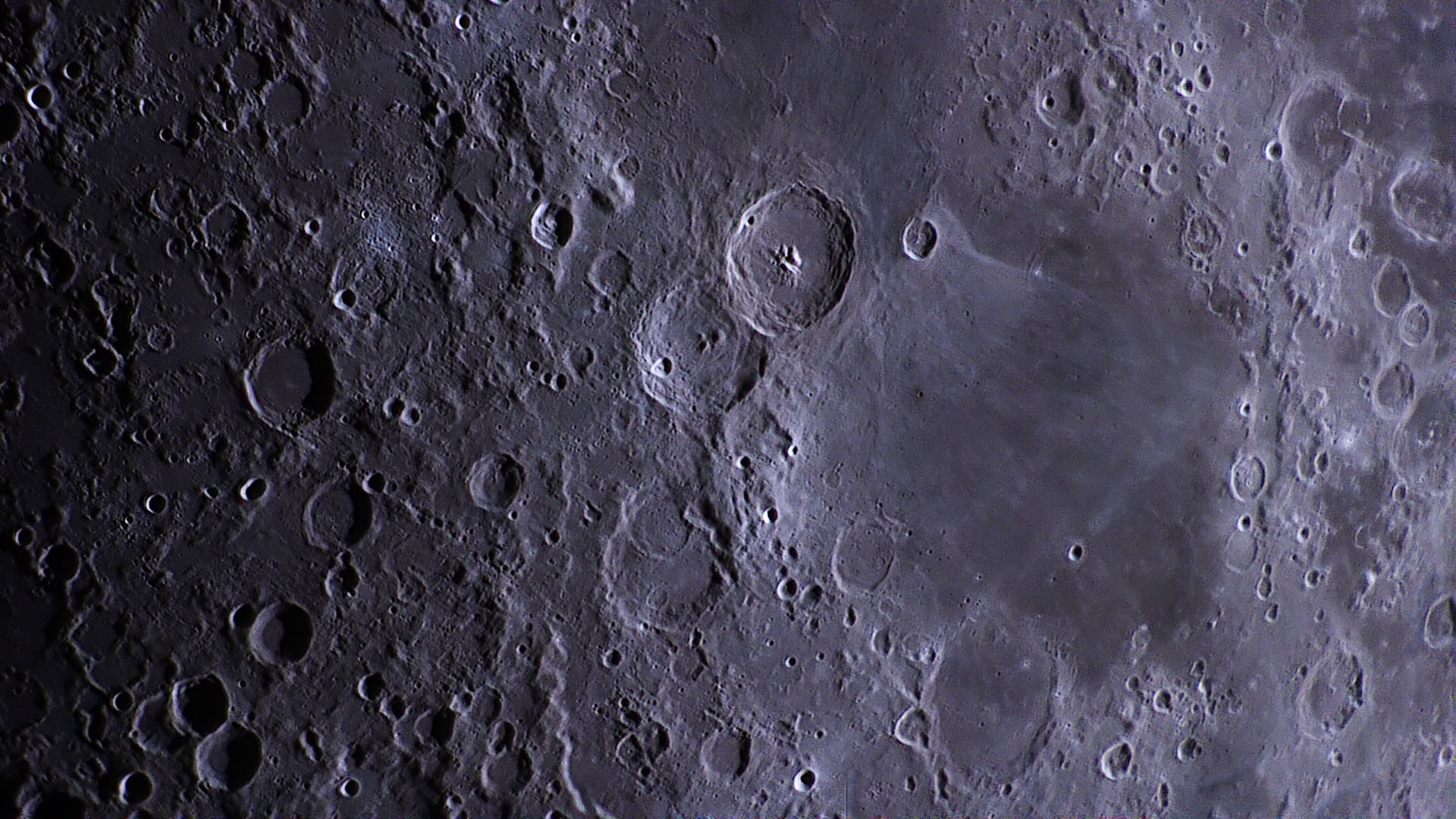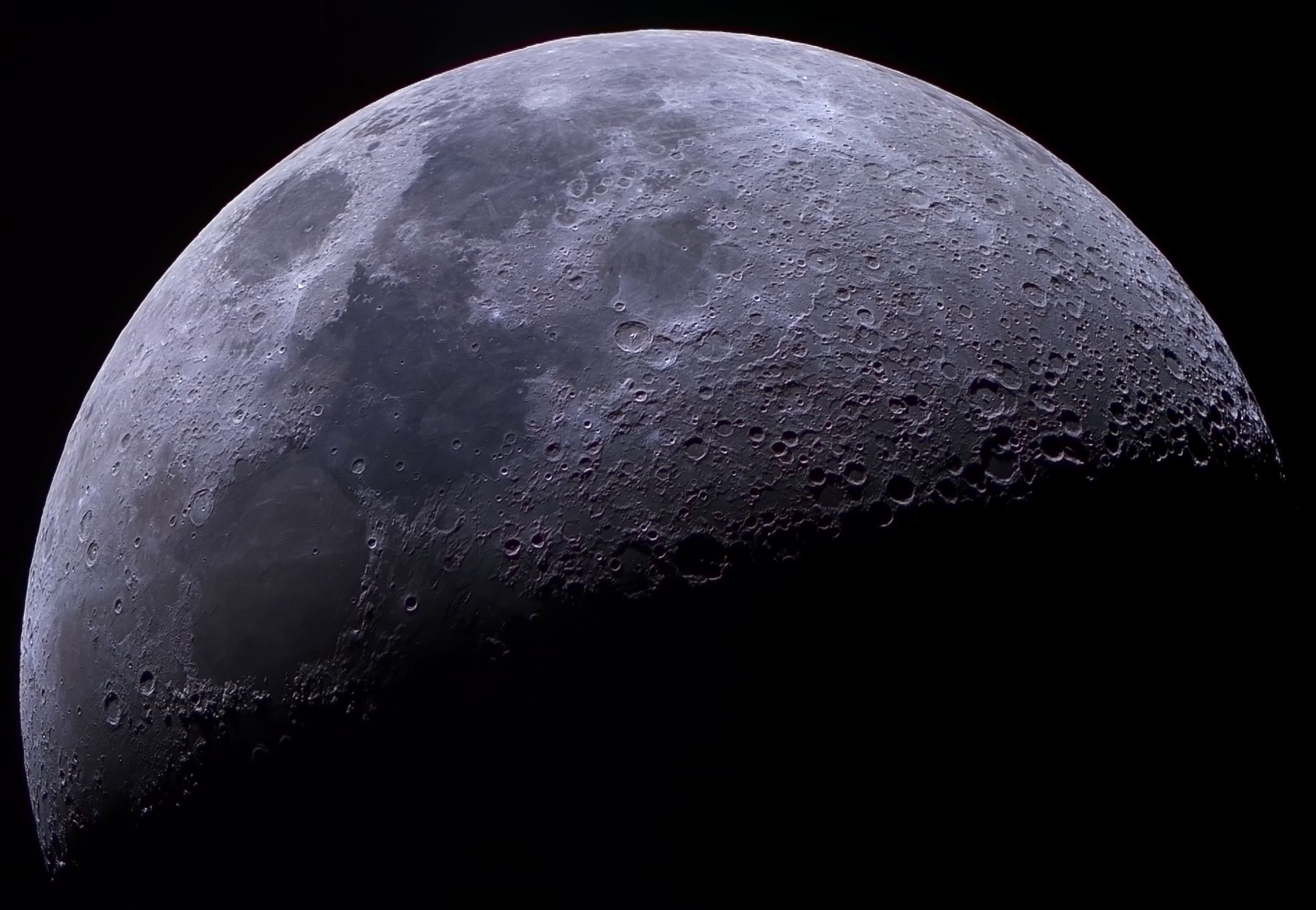Equipment Review (Preliminary)
ZWO ASI120MC-S
Purchase price: JPY 18,500
Dealer: KYOEI-TOKYO
Conclusion: Simply wonderful!
Please appreciate that this review reflects personal impressions and views.

ZWO ASI120MC-S (color) or ASI120MM-S (monochrome)
There are two means of connecting the ASI camera to a guidescope, 1. attach it the M42 thread or use the included 1.25" nose piece adapter. The latter method allows easy rotation of the camera should a guide star not match the camera sensor's pixel size.
ZW Optical (ZWO) is a company founded by amateur astronomers. Its ASI120Mx-S CMOS camera is available in color or monochrome at around USD 150.00 and USD 180.00, respectively. Its extremely well crafted body incorporates a B-type USB 3.0 computer port (control port and power source) and a ST4 guide port which connects to a compatible equatorial mount via a straight RJ11 6P6C cable. It hosts ON Semiconductor's AR0130CS 1/3 inch sensor (4.8mm x 3.6mm) with 1280 x 960 pixels, 3.75µm square. The color version (Bayer pattern GRBG) integrates an IR-cut filter while the monochrome version integrates an anti-reflection filter as optical window. The common back focus is 12.5mm. The monochrome version (the better choice for guiding purposes) has a higher peak QE than the color camera, both with a 12-bit ADC. Both weigh 100 grams and bundle a simple 2.1mm CCTV lens providing a 150° sky view, say for meteor capture. It is a nice gesture of ZWO as you can start right away using the camera for getting familiar with it, say, during daylight rather than fumbling helplessly in the dark the first night out.
ZWO provides download of a native obligatory camera driver and 'ASIStudio' image and video capture software which is also capable of autoguiding. The popular PHD2 software can as well be used for autoguiding. The camera is also compatible with the famous 'SharpCap' and 'FireCapture' software suites.
With a relatively 'large' pixel size of 3.75µm the ASI 120MC-S gathers much light with less noise per pixel. When using 2x binning with the capture software the camera treats 4 pixels as if one, collecting even more light while producing a brighter image, however, at less detail. When imaging small planets, the camera can crop the area it processes thus considerably increase the video frame rate (ROI function).
The only difference between its precedessor model (without "-S") is the upgrade from USB 2.0 to USB 3.0 providing a much faster frame rate and compatibilty with ZWO's ASiair WiFi controller.
The ASI120Mx-S is shipped well wrapped in reusable, recyclable materials and is an economical way to start with planetary and autoguiding.
The people at ZWO know exactly what they are doing.
When using the bundled CCTV lens, please adjust focus slowly and be sure to not focus beyond infinity because the lens, when screwed in too far, can scratch the optical window.
Focal Reducer

1.25 inch 0.5x focal reducer
Since the ASI120Mx-S is primariy designed for autoguiding and planetary imaging it cores a small sensor resulting into a narrow FOV. Even when connected to a short focal length scope, such as 450mm, the moon won't fit into the frame. A small, inexpensive 1.25-inch 0.5x focal reducer, such as the one made by GSO, Taiwan (sold by Kasai Trading at around 30 USD), halves focal length and exposure time while fully embracing the moon's disk. The reducer also can help capture bright nebulae, such as the Lagoon or Orion, with a fast, short focal length telescope. Expectations for DSOs should be aligned with reality as this camera is not recommended by the manufacturer for deepsky imaging.
 M42, a live stack of 87 frames, 5 sec each, gain 35, 450mm APO, 0.5x reducer.
M42, a live stack of 87 frames, 5 sec each, gain 35, 450mm APO, 0.5x reducer.
 M35, a live stack of 31 frames, 20 sec each, gain 20, 450mm APO, 0.5x reducer.
M35, a live stack of 31 frames, 20 sec each, gain 20, 450mm APO, 0.5x reducer.
 M45, a stack of 30 light frames, 60 sec each, gain 0, 135mm lens, without focal reducer.
M45, a stack of 30 light frames, 60 sec each, gain 0, 135mm lens, without focal reducer.
The above test images showcase the "deepsky capability" of the ASI120MC-S. Though with more affection and patience better results can be achieved, it can't compete with DSLRs and dedicated deepsky cameras.
A reducer will widen the view with a guidescope (entailing a shorter backfocus, thus less focuser travel) and also comes in handy when you are using your small telescope as autoguider. Note that the actual reduction will vary a little over or under 0.5x depending on exactly where the focal reducer is placed in the optical path.
Test Images
Videos taken with the ASI120MC-S on a Sky-Watcher F5 Newtonian with 150mm aperture and 750mm native focal length. Processed to images with Autostakkert!3 stacking software plus curve adjustment and a high-pass filter applied in Photoshop. The camera's sensor temperature was above 30°C, nevertheless the noise performance is convincing, certainly also thanks to stacking. The limitation due to seeing far outweighs any limitations of the camera itself. Please appreciate that all images are in compressed JPEG sacrificing original quality.
 With 2x Barlow, built-in IR-cut filter, Saturn inserted to scale.
With 2x Barlow, built-in IR-cut filter, Saturn inserted to scale.
 Without Barlow, built-in IR-cut filter Full screen
Without Barlow, built-in IR-cut filter Full screen
 With 2x Barlow, built-in IR-cut filter Full screen
With 2x Barlow, built-in IR-cut filter Full screen
 With 2x Barlow, built-in IR-cut filter, forced color saturation.Full screen
With 2x Barlow, built-in IR-cut filter, forced color saturation.Full screen
 With 2x Barlow, built-in IR-cut filter, forced color saturation.Full screen
With 2x Barlow, built-in IR-cut filter, forced color saturation.Full screen
Though recommended for monochrome cameras, an IR-pass filter can be used with color cameras with white balance reset (red and blue = 50%) and the built-in IR-cut filter removed. The following image was taken by the ASI 120MC-S with a 6-inch Newtonian and a ZWO IR850nm filter, a worst case scenario for the camera in terms of responsiveness. The result showcases that the ASI 120MC-S provides sufficient sensitivity and frame rate for using even the 'strongest' IR-pass. Average exposure time for the moon is 25ms at 50% gain, stack of 100 best frames from 1000, pre-sharpened in Autostakkert!3 and converted to gray scale plus some fine tuning in Photoshop.
 With 2x Barlow and ZWO IR850nm pass filterFull screen
With 2x Barlow and ZWO IR850nm pass filterFull screen
 Without barlow, built-in IR-cut filter, forced color saturation, mosaic of 4 panels.Full screen
Without barlow, built-in IR-cut filter, forced color saturation, mosaic of 4 panels.Full screen
Pros
- Fast, sufficiently sensitive, good noise performance
- USB 3.0 control interface
- Includes a 2.1mm CCTV lens
- Light weight, solid construction
- Multiple means of connecting gear
- Easy sensor access for cleaning
- Removable IR-cut filter as optical window
- Comes with intuitive capture software
- Quarter-inch tripod thread
- Bundles all needed adapters and cables
Cons
- The C-adapter ring can get stuck in the thread (two holes are drilled to help get it loose; use wooden sticks). A minor issue.
Wish List
- Over-voltage/current protection circuit

